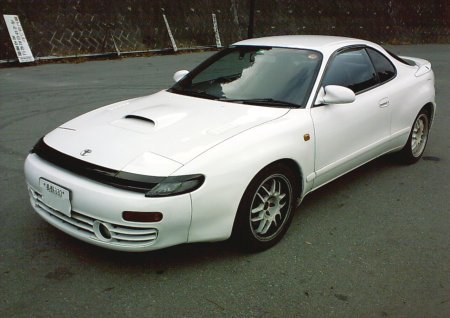| ST165 |
 |
| The ST16x was manufactured between 1986 and 1989 |
FREQUENTLY ASKED QUESTIONS
Please be aware that these articles & guides are submitted by Forum and Club Members and experiences may vary. Always do your research and get a professional opinion.
If you would like to contribute to these FAQ, then please send an e-mail to - contactus@gt4dc.co.uk
| What is a Celica GT4 | How do I know which model is which | What fuel should I use? |
| How much fuel will it use | What Engine Oil should I use | How often should I change the oil |
| What else should I change when changing the oil | What Gearbox oil should I use | What's the wheel stud pattern i need |
| What offset wheels do I need | Do I need spacers with my new wheels | Stock Boost Levels |
| Modifications NOTE When you start to modify a car beyond the manufacturer's specification you have to accept the risks that go with it. The GT4 Drivers Club take no responsibility for any damage arising from information provided here | ||
| Things to do before modding your car | First Modifications | Increasing Boost |
The GT4 hails from the days of rallying when manufacturers were required to produce road going versions of their Rally cars (In actuality the reverse is true. Manufacturers had to produce their rally cars from their road going variants. Either way the end result is the same :-)
Model runs were quite limited, which probably explains why you are reading this part of the FAQ although the GT4 has been in production in various guises since 1987 and has been successfully rallied by Toyota and privateers for many years.
The last digit in the model code indicates the exact model or engine type. Traditionally, 5 has been used to denote the turbo 4WD models, hence ST165, ST185 and ST205
| ST165 |
 |
| The ST16x was manufactured between 1986 and 1989 |
| ST185 | |
 |
 |
| The ST18x between 1989 and 1993 | The ST185CS(Europe) and ST185RC(Japan) versions were homologation special versions of the 185
They featured a number of upgrades over the standard 185 cars and indeed share some parts with the later ST205 models. The most notable difference is in the charge cooling system. Standard ST185s have a top mounted air to air cooler whereas the CS/RC versions have a water to air charge cooler system as found in the 165 and 205 cars.
|
| ST205 |
 |
| The ST20x between 1994 and 1999 |
Japanese cars are designed and mapped to run on their 100 RON octane fuel. A lower octane rating can cause the engine to detonate/knock under load causing internal damage. In an ideal world the ECU will compensate for this using the knock sensor system but it is still far and away better to use the highest octane available. JDM models running standard ECUs will also make progressively more power with higher octane fuel up to 100RON
For heavy abuse days such as dragstrip events, trackdays etc. it is worth considering running octane booster. While this will not generally produce more power from the engine it will provide an additional safety margin from detonation
Average on road figures for a standard car would probably work out around 22-27mpg. Those with a heavy right foot may struggle to even reach the lower end of this band. People with gentle right feet have been known to get 350+ miles out of a 13 gallon tank on long runs. So 30mpg is possible but not common! On track expect less than 10 mpg!
The Toyota recommendation is for a 10W50 multigrade. The important thing is that any turbo car should be using 100% synthetic oil to handle the extra heat generated by turbo applications.
At the end of the day the choice is yours. Some people use cheap semi-synth and change it every couple of thousand miles with no apparent side effects
It is worth bearing in mind though that a couple of microns thickness of your engine oil is all that comes between the crankshaft spinning at 6000 rpm and the soft metal big end bearings!
Running in a new or rebuilt engine requires mineral or semi-synthetic oil for a limited mileage, usually between 500 and 1000 miles.
Turbo cars in general burn large amounts of fuel (in case you have not noticed!). This can lead to rapid contamination of engine oil with hydrocarbons
The general recommendation for "average" cars would be 3000 to 6000 miles of "average" use, however, those subjected to spirited use should aim for the lower end of that range and if the car is tracked or run up the dragstrip on a regular basis it might be a good idea to change it in between trackdays.
At the end of the day there are no hard and fast rules but as with choice of oil it is worth remembering that oil is the engine's blood.
If it has done it's job then the old filter will be full of particulate contaminates removed from the old oil. The last thing you want to do when putting fresh oil in is to run the risk of immediately contaminating it with this!
NB
Ensure that you get GL-5 specification
The differential should hold around 5 litres.
Note
In addition to the above, things that you could do that are free would be to;